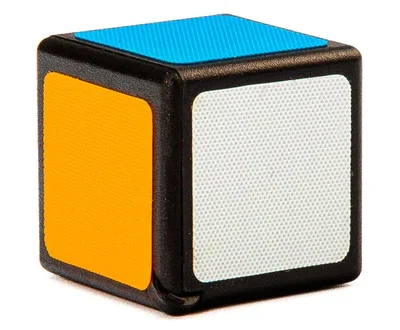When investing in the Indian financial market or any global market, understanding how to measure risk-adjusted performance is crucial. Among the most prominently used metrics are the Sharpe Ratio and the Sortino Ratio. Both ratios provide insights into the return per unit of risk, but they differ fundamentally in their approach to risk measurement. This article delves into the distinguishing characteristics of the Sharpe Ratio and the Sortino Ratio, featuring primary keyword “Sortino Ratio” and secondary keyword “Sharpe Ratio.”
Understanding Sharpe Ratio
The Sharpe Ratio is named after William F. Sharpe, who introduced it in 1966. It measures the performance of an investment compared to a risk-free asset, after adjusting for its risk. The formula for calculating the Sharpe Ratio is:
\[ \text{Sharpe Ratio} = \frac{(R_p – R_f)}{\sigma_p} \]
Where:
– \( R_p \) = Portfolio return
– \( R_f \) = Risk-free rate of return
– \( \sigma_p \) = Standard deviation of the portfolio’s excess return
For example, if an Indian investor has a portfolio with an expected return (\( R_p \)) of 15%, and the current risk-free rate (\( R_f \)) is 6%, while the standard deviation (\( \sigma_p \)) is 10%, the Sharpe Ratio would be:
\[ \text{Sharpe Ratio} = \frac{(15\% – 6\%)}{10\%} = \frac{9\%}{10\%} = 0.9 \]
A higher Sharpe Ratio indicates a better risk-adjusted return. It offers a broad-based view by calculating the total risk (upside and downside), using standard deviation as an encompassing measure.
Understanding Sortino Ratio
The Sortino Ratio, named after Dr. Frank A. Sortino, refines the Sharpe Ratio by isolating downside risk. Unlike the Sharpe Ratio, which considers total volatility, the Sortino Ratio only considers the downside deviation – the negative fluctuations below a predefined acceptable return (MAR – Minimum Acceptable Return). The formula is:
\[ \text{Sortino Ratio} = \frac{(R_p – MAR)}{\sigma_d} \]
Where:
– \( R_p \) = Portfolio return
– MAR = Minimum Acceptable Return (or target return)
– \( \sigma_d \) = Downside deviation
Let’s consider the same portfolio with an expected return (\( R_p \)) of 15%, but use a more targeted approach where the investor’s minimum acceptable return (MAR) is 7%, and the downside deviation (\( \sigma_d \)) is only 5% since we’re focusing solely on negative deviations:
\[ \text{Sortino Ratio} = \frac{(15\% – 7\%)}{5\%} = \frac{8\%}{5\%} = 1.6 \]
A higher Sortino Ratio suggests that the investment has a better risk-adjusted return without penalizing the upside volatility. It differentiates between beneficial and harmful volatility, thus providing a more focused risk assessment.
Key Differences
1. Risk Measurement:
– Sharpe Ratio: Incorporates both upside and downside volatility. It provides a broader perspective by considering total risk.
– Sortino Ratio: Focuses only on the downside risk, thus aiming to offer a more accurate picture of harmful volatility.
2. Utility:
– Sharpe Ratio: Ideal for portfolios where upside volatility is as impactful as downside volatility. It’s widely used for general performance comparison.
– Sortino Ratio: More suitable for risk-averse investors who are primarily concerned with downside risk, marking it particularly useful in more conservative investment strategies.
3. Benchmarking:
– Sharpe Ratio: Uses the standard deviation of the entire returns.
– Sortino Ratio: Uses only the standard deviation of downside returns.
Example Calculation in Indian Rupees
Suppose an Indian investor has two portfolios:
– Portfolio A with a return (\( R_p \)) of 18%, standard deviation (\( \sigma_p \)) of 12%, and downside deviation (\( \sigma_d \)) of 7%.
– Portfolio B with a return (\( R_p \)) of 16%, standard deviation (\( \sigma_p \)) of 10%, and downside deviation (\( \sigma_d \)) of 6%.
Assuming a risk-free rate (\( R_f \)) of 6% and a MAR of 7%, the calculations are:
Portfolio A:
– Sharpe Ratio = \( \frac{(18\% – 6\%)}{12\%} = 1 \)
– Sortino Ratio = \( \frac{(18\% – 7\%)}{7\%} = 1.57 \)
Portfolio B:
– Sharpe Ratio = \( \frac{(16\% – 6\%)}{10\%} = 1 \)
– Sortino Ratio = \( \frac{(16\% – 7\%)}{6\%} = 1.5 \)
Summary
In summary, while both the Sharpe Ratio and the Sortino Ratio are crucial tools in assessing risk-adjusted returns, they serve different purposes. The Sharpe Ratio considers total volatility, offering a broader risk perspective, whereas the Sortino Ratio zeroes in on downside risk, providing a more nuanced view of harmful volatility. For Indian portfolio managers and individual investors, understanding these distinctions helps select the more suitable metric for specific risk preferences and investment strategies.
Disclaimer: This article serves as an educational primer. Investors should comprehensively assess all potential risks and consult with financial professionals before making any trading decisions in the Indian financial market.



